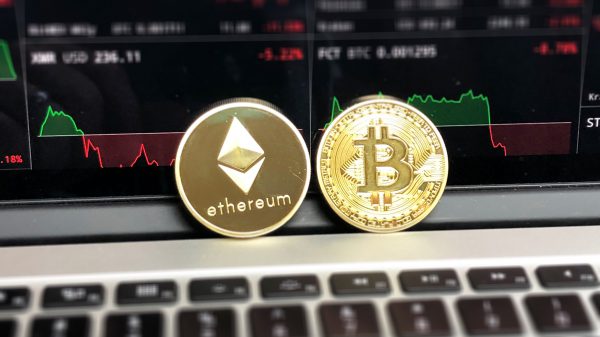On Monday, the Reserve Bank of India issued a notification on virtual currencies or crypto-currencies and reiterated what it has been saying for over 8 years. It instructed banks to adhere to existing rules on money laundering, terrorism finance, foreign exchange management and Know-Your-Customer norms, when dealing with crypto firms.
This was triggered by emails sent last week by India’s leading banks to their customers, warning about the risks of investing in cryptos. While HDFC Bank asked customers to provide information as to the nature of certain transactions, SBI Cards and Payments warned its users against buying crypto-currencies on their credit card. Both banks said that if customers do not comply, they would take action.
At the outset it is clearly not legally tenable to cite a circular, which was struck down by the Supreme Court last year on the grounds of “proportionality”. The RBI said as much in its statement on Monday. It said: “the circular is no longer valid from the date of the Supreme Court judgement, and therefore cannot be cited or quoted from.”
But over the last three months, some of the lead banks have shut access to deposit and payments channels to crypto-exchanges. No one knows for sure what was said, or what was communicated to the banks by the regulator. But sources at banks and across crypto-exchanges have told MediaNama that it all started with the IPL – the Indian Premier League, the Cricket tournament.
A complete low-down on crypto-currency regulation in India.
The Burden Of Euphoria
Last year, the average daily trading volumes across the top Indian crypto-exchanges hovered between $250,000-$6 million or Rs 18 lakh-Rs 43 crore. From January this year, the average daily trading volumes shot up to $1 million to $400 million or Rs 7 crore-Rs 3,000 crore on some days.
With immense wealth generation in a short-time span, mania over Bitcoin prices and higher trading volumes meaning more exchange fees, ads began to appear during the IPL earlier this year, particularly with a clear message to “Buy Bitcoin.”
Sources said this clearly triggered the RBI, which communicated through informal means that it was uncomfortable with the level of banking activity taking place in the crypto-verse. Bankers also said that with higher trading volumes, came questions from the RBI.
Ever since the Supreme Court struck down the RBI’s April 2018 circular, which barred banks from dealing with crypto-firms and individuals, the banks opened their channels to these businesses. This included current account services and tie-ups with payment companies. It became relatively easy to buy cryptos, for as little as Rs 10 to Rs 500 a month, through UPI and cards, e-wallets and other digital payment modes. Some of the major payment firms kept out, but the leading banks saw this as a massive opportunity perhaps to earn fees, perhaps to support the future of currency, assets and finance.
In fact, last year the apex court told the RBI to work on new regulations. But the RBI did not issue any new guidelines to banks and payment companies since the verdict.
What Banks Don’t Know
When money goes from person X to Crypto-Exchange ABC, the banks’ know this information because ABC is on their network and is using its software for accepting deposits from investors. The exchanges themselves have adopted a code of conduct and standard operating procedures to ensure they comply with the RBI’s existing rules on money laundering, KYC and other aspects.
If X takes Rs 50,000 dumps them in cryptos and earns Rs 100,000 a few months later, and then decides to withdraw Rs 50,000; the bank knows again that ABC gave the Rupee currency to X.
But the bank and crypto-exchange may never find out what X really did with the cryptos. Since Bitcoin functions on the principle of barter, it can act as a currency.That is as a means of exchange, which is also a tradable asset and commodity in the case of Ethereum for instance.
If X bought Rs 20,000 in Bitcoin to finance illicit activities, the banks need to know. If X earned Rs 10,000 on his initial Rs 20,000 nefarious investment, and then withdrew this illicit money from the exchange back into the formal banking system, the banks need to know.
In 2020, there were $42 million worth of trades taking place on the dark web using crypto-currencies across Indian blockchain accounts. And ponzi schemes continue to run amok.
When it comes to illegal crypto-activity and trace-ability, it depends on which crypto-enthusiast you talk to. The crypto-industry folk would say there are “tools and software” available, technology experts say “anonymity is fundamental to the technology”, while bankers would tell you “if X is smart enough, they can get away with it”.
Imagine even if 1% of the average trading volume is withdrawn everyday from the crypto-exchanges, that is around Rs 7 lakh on some days and Rs 30 crore on others. This is an immense amount of money flowing through the banks, at random order, which naturally means the banks’ legal and compliance departments are burdened with questions and filings.
Understandably, the RBI thinks this is all just too risky. Especially without a law giving it the requisite legal authority to intervene and set the regulations.
The Regulatory State
The RBI in its statement said that banks, co-operative banks, payments banks, small finance banks, non-banking financial firms and payment system providers, “may, however, continue to carry out customer due diligence processes” and follow existing regulations.
Presumably, the banks were following these standards as far as ABC was concerned as businesses and X as individual customers.
In the last few years, the RBI has stepped up its enforcement action against banks, financial entities and payment companies. The quantum of fines are rising and last year, for the first time it used business sanctions as another regulatory instrument. It is not like the banks would not have been following the existing KYC, money laundering and foreign exchange guidelines. Can today’s bank look away and not comply with regulations in any type of activity?
The problem is that there is no definition of crypto-currencies in law. And neither has the government given regulatory powers to the RBI or any other financial regulator to look after the space.
Banks and payment firms cannot track and monitor complex transactions across the crypto-verse through their existing technology and compliance software.
While banks can monitor what comes in and out of X and ABC’s account, if X is on Bank A and ABC’s account is on Bank B’s network, that adds more complexity into the mix. This needs industry wide coordination and regulations. Tax authorities would need to peep at this data as well.
Perhaps some of the larger and wealthier banks, and payment companies, have purchased expensive software to track blockchain transactions. But most would not have the ability to do this.
Initially, the government said that it would ban crypto-currency activity in India and then it clarified that it would adopt a”calibrated approach”. Thereafter, the government amended the regulations on company financial disclosures recognising virtual currencies as a digital asset. Through this amendment it also indirectly recognised the role of crypto-exchanges, as businesses that perform a fiduciary role. The government also told Parliament that crypto-exchange transactions and investments are taxable.
Now, it is reportedly forming a new committee to examine the prospect of regulating the crypto-verse. According to sources, this committee will be composed of Parliamentarians and Cabinet Ministers as opposed to the previous committee of government officials which recommended a complete ban and criminal provisions to be enacted against crypto firms, investors, traders and miners.
In the last few months, influential stakeholders like Infosys’ non-executive chairman Nandan Nilekani, Former Finance Secretary Subash Chandra Garg who headed the previous crypto committee, to Shashi Tharoor have said that regulating crypto-currencies is the way forward. A month after its launch, the India Covid-Crypto Relief Fund has raised nearly $1.6 billion dollars, which will be distributed to NGOs and other organisations working to fight the virus.
The government and RBI should take comfort in the fact that global consensus has built up in the last 8 years, that crypto-currencies are not a threat and in order to safeguard against risks: you need regulations. From market regulators, global card networks, banks, hedge funds, monetary authorities, corporate treasuries, stock exchanges and municipal authorities opening their arms to crypto-currencies and blockchain, but with regulations.
Politics and Chaos
Unfortunately, policy making is not just a relationship between government, regulators, businesses and citizens/consumers. It is also a political act, and cryptos can certainly be used as a political instrument. The adoption of cryptos was an inevitability, ever since their creation a decade ago in the wake of financial disaster. This follows the same historicity, when metal was made into coins or when the first parchment or paper currency note was created to replace an older mode of payment and exchange.
Given the political nature of crypto-currencies and new technology, the government is adopting a centralise-first approach across the board; whether it is artificial intelligence, blockchain, digital currencies/assets and even vaccine deployment.
If a CBDC is in the works because the government feels the underlying technology of blockchain is inevitable, it cannot divorce crypto-graphy from the equation. This is similar to the argument made by WhatsApp in its suit against the governments’ new rules. If the state accepts the right to privacy, it must accept one’s right to encrypted messaging. Similarly, if CBDC or a Digital Rupee can be purchased and used by citizens, banks and businesses, the government cannot divorce one’s choice to buy, sell, trade, mine and earn exorbitant returns on crypto-currencies.
Just last week, HDFC Bank’s Treasury department published a note that looked at the returns of leading crypto-currencies and compared them with returns on investments in the S&P and NASDAQ index, and Gold since January. While the returns in Bitcoin stood at 36%, returns on the S&P index stood at 17%, for instance. Young people and everyday investors are willing to put some funds into the crypto-currency world because of these high returns, and are willing to accept the risk.
The banks’ note ended by saying: with CBDCs in the offing it is “just a matter of time before Indian investors have legal access to Crypto plays”.
Due to unnecessary uncertainty, some of the top banks lost out on a decent amount of business with large volumes of deposit and withdrawal flows. The crypto exchange founders and their teams had to respond to these changes working overnight, making calls, coding away. Some of them have turned to new payment partners and new banks, while others lost out. Meanwhile, Indian crypto-activity remains resilient and most investors are unwavering in their commitment.
Why the Cryptic messaging? Why the Chaos?















